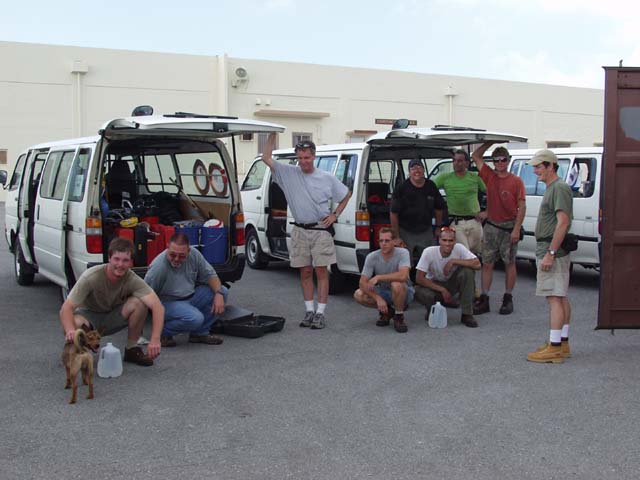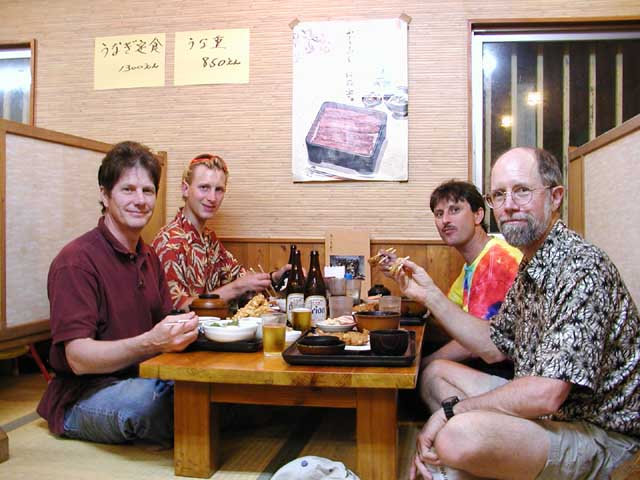 |
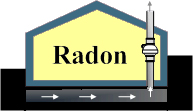 |
Bill Brodhead WPB Enterprises Inc
Radon & Vapor Intrusion |
 |
 |
|
Bill Brodhead WPB Enterprises Inc.
Radon & Vapor Intrusion |
 |
 |
|
 |
 |
Military Radon Mitigation SystemsWPB Enterprise has provided crews to installed radon mitigation systems in: over 600 Navy Houses in Guam, 100 Navy Houses and Commercial Buildings in Okinawa, 30 Navy Homes in Korea, and 100 Army houses in Kentucky as well as to evaluate and design Radon Mitigation Systems for Kadena Air Force Base in Okinawa |
|
The WPB crew the first week in Okinawa installing systems for the Navy (Sept - 2002) |
 |
|
Military Housing in the Pacific is mostly slab on grade. We often had to core through 22" of reinforced concrete to get into the sub-slab. |
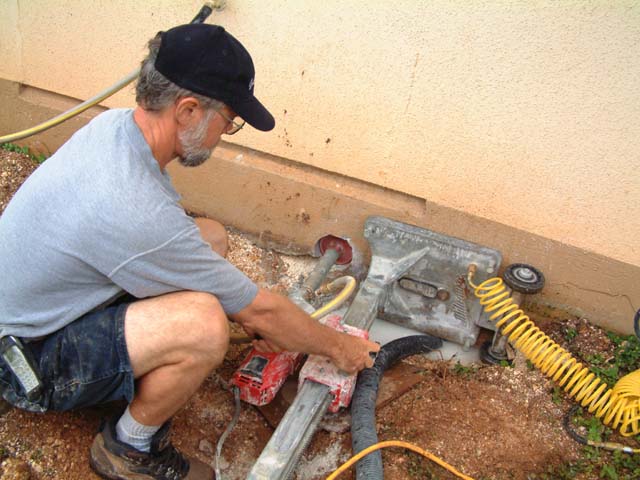 |
 |
|
The sub-slab material was often compacted fill. A radon fan was temporarily installed to measure the pressure field extension to determine if additional suction holes needed to be installed. |
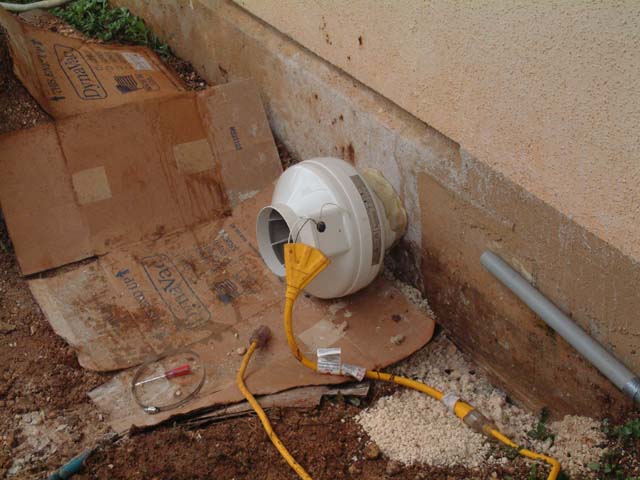 |
 |
|
If the sub-slab material was very compacted you can sometimes extend the pressure field by boring in with a high pressure water jet. |
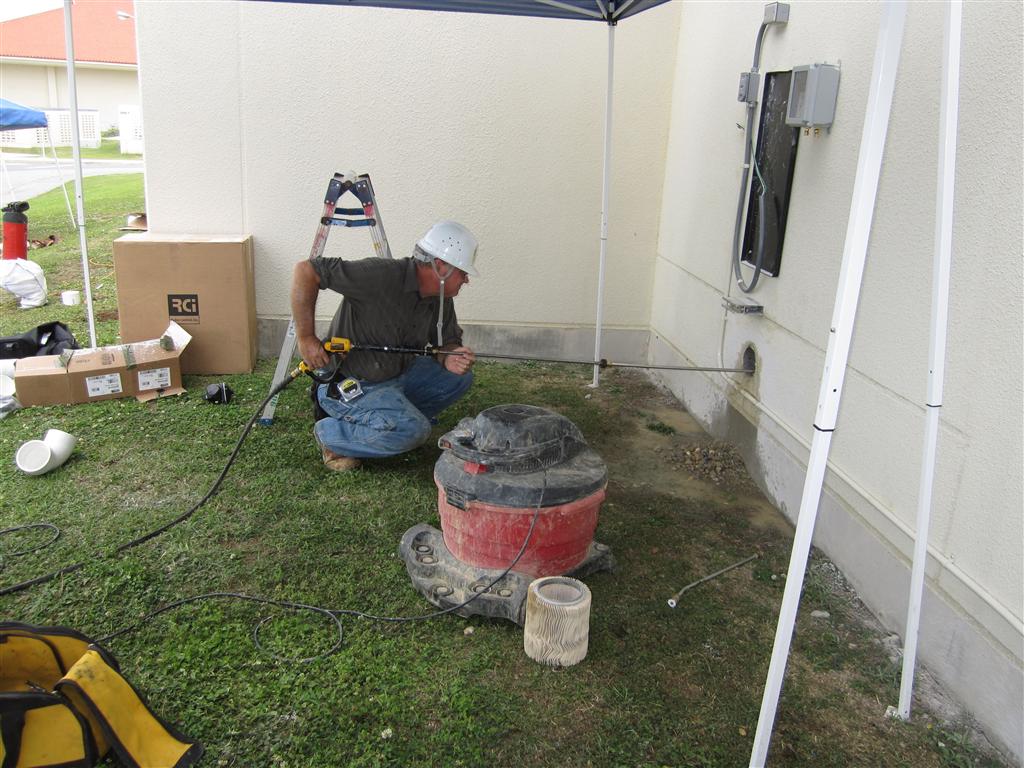 |
 |
|
Test holes were drilled in the slab to measure the pressure field extension with the test fan or radon fan running. |
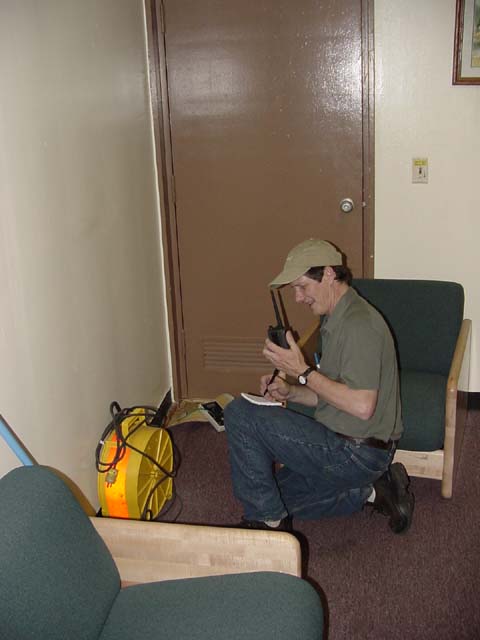 |
 |
|
Multi-Fan Single Suction Systems installed on a commercial building in Okinawa. |
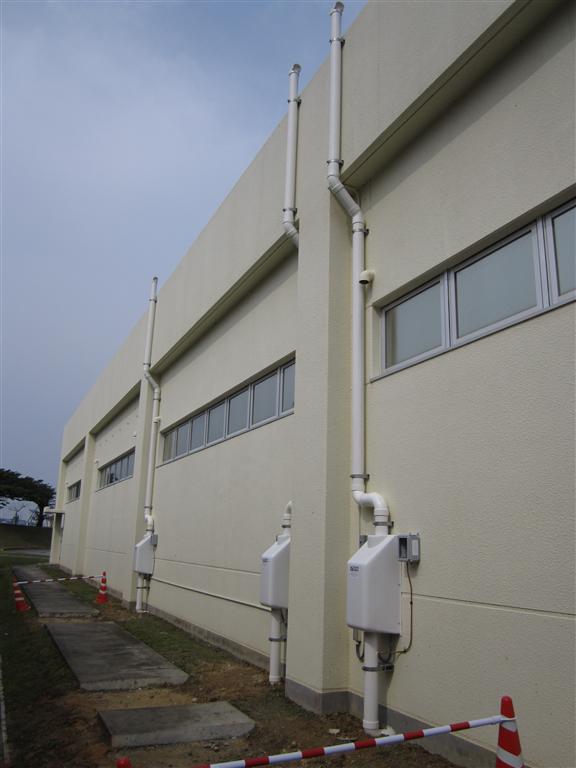 |
 |
|
Monolithic slabs often required the suction point to extend into the room. In this unit the piping was recessed below the floor to minimize the final system intrusion into the space. |
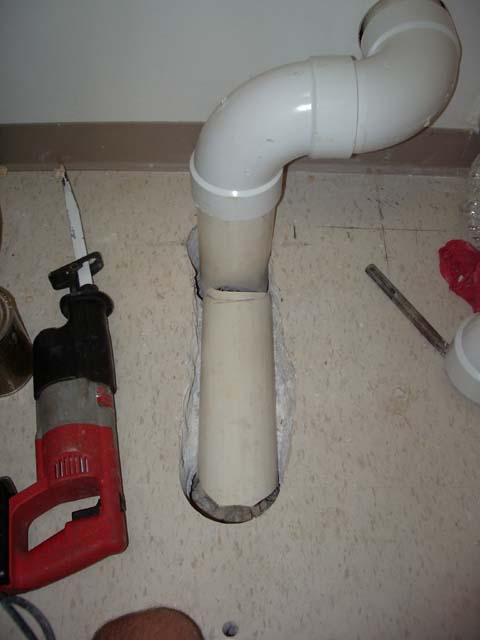 |
 |
|
The pipe was then routed to the outside patio. The walls required diamond coring because of the reinforced concrete. |
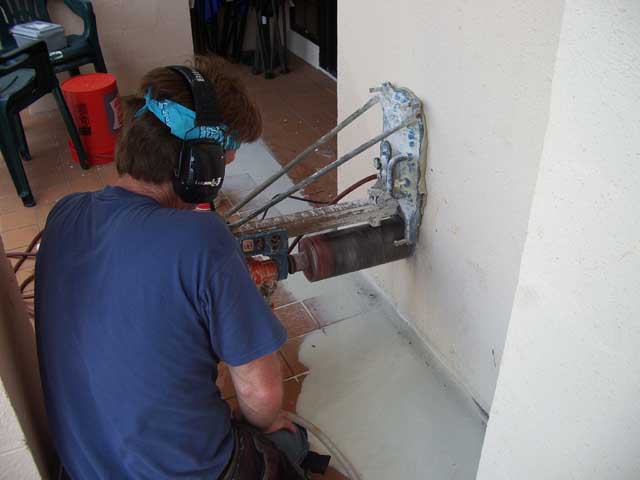 |
 |
|
The pipe was then routed through the roof which also required coring because of the reinforced concrete |
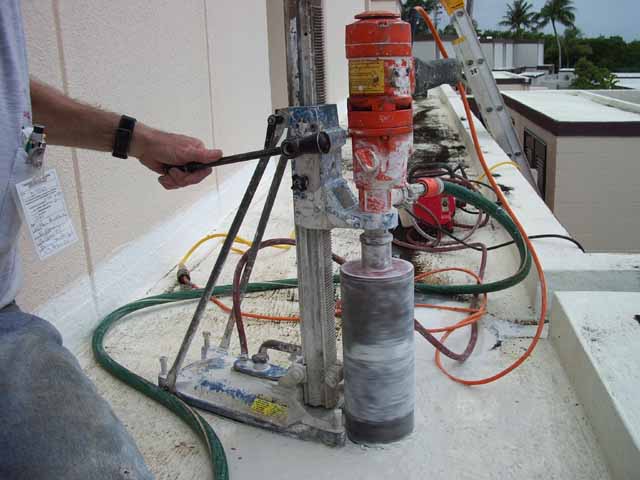 |
 |
|
The radon fan was either bolted to the roof or routed up an addition wall to the highest location. The cored holes were carefully flashed. |
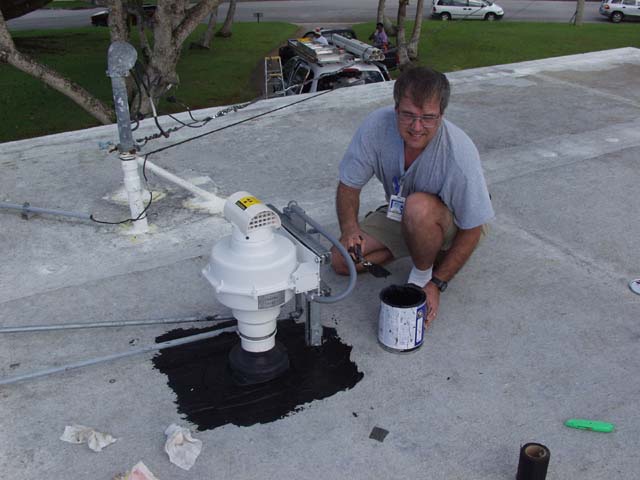 |
 |
|
The salt from the Pacific air is very corrosive. Stainless steel fasteners and pipe clamps were used with aluminum or galvanized uni-strut to secure the piping. |
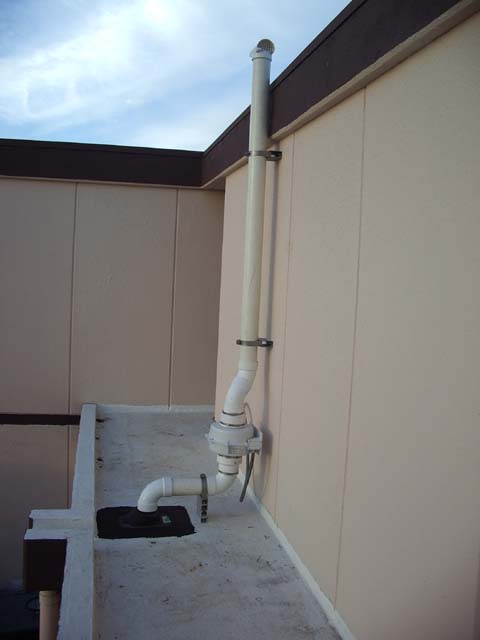 |
 |
|
Multiplex buildings often had crawl spaces under the plumbing areas. This crawl space was temporarily depressurized to determine the amount of air required to maintain adequate negative pressure. |
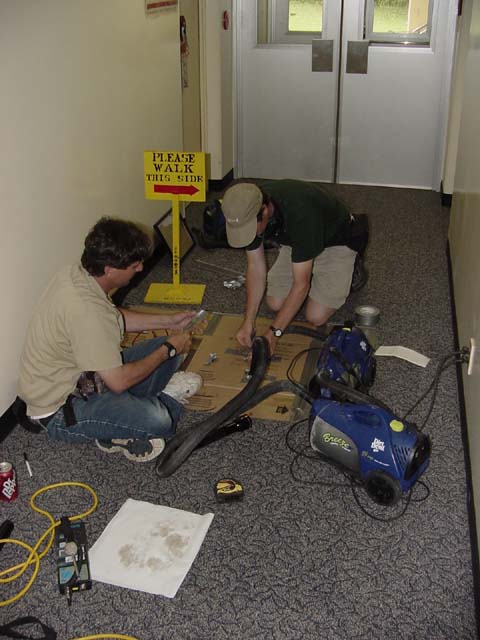 |
 |
|
Of course we had to enjoy the culture, food, hiking, shopping and scuba diving where ever we went. |
 |
|
If you have any questions please feel free to call Bill at 610 346-8004 |
 |
 |
Military Radon Mitigation SystemsWPB Enterprise has provided crews to installed radon mitigation systems in: over 600 Navy Houses in Guam, 100 Navy Houses and Commercial Buildings in Okinawa, 30 Navy Homes in Korea, and 100 Army houses in Kentucky as well as to evaluate and design Radon Mitigation Systems for Kadena Air Force Base in Okinawa |
|
The WPB crew the first week in Okinawa installing systems for the Navy (Sept - 2002) |
 |
|
Military Housing in the Pacific is mostly slab on grade. We often had to core through 22" of reinforced concrete to get into the sub-slab.
|
 |
|
The sub-slab material was often compacted fill. A radon fan was temporarily installed to measure the pressure field extension to determine if additional suction holes needed to be installed.
|
 |
|
If the sub-slab material was very compacted you can sometimes extend the pressure field by boring in with a high pressure water jet.
|
 |
|
Test holes were drilled in the slab to measure the pressure field extension with the test fan or radon fan running.
|
 |
|
Multi-Fan Single Suction Systems installed on a commercial building in Okinawa.
|
 |
|
Monolithic slabs often required the suction point to extend into the room. In this unit the piping was recessed below the floor to minimize the final system intrusion into the space.
|
 |
|
The pipe was then routed to the outside patio. The walls required diamond coring because of the reinforced concrete.
|
 |
|
The pipe was then routed through the roof which also required coring because of the reinforced concrete
|
 |
|
The radon fan was either bolted to the roof or routed up an addition wall to the highest location. The cored holes were carefully flashed.
|
 |
|
The salt from the Pacific air is very corrosive. Stainless steel fasteners and pipe clamps were used with aluminum or galvanized uni-strut to secure the piping.
|
 |
|
Multiplex buildings often had crawl spaces under the plumbing areas. This crawl space was temporarily depressurized to determine the amount of air required to maintain adequate negative pressure.
|
 |
|
Of course we had to enjoy the culture, food, hiking, shopping and scuba diving where ever we went. |
 |
|
If you have any questions please feel free to call Bill at 610 346-8004 |
 |
